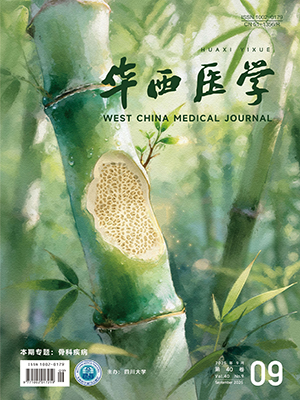| 1. |
Kidney Disease: Improving Global Outcomes (KIDGO) CKD Work Group. KIDGO 2012 clinical practice guideline for the evaluation and management of chronic kidney disease. Kidney Int Suppl, 2013, 3(1): 1-150.
|
| 2. |
Zhang L, Wang F, Wang L, et al. Prevalence of chronic kidney disease in China: a cross-sectional survey. Lancet, 2012, 379(9818): 815-822.
|
| 3. |
刘建广, 王新. 随机尿微量白蛋白与肌酐比值对 2 型糖尿病肾病的早期诊断价值. 天津医科大学学报, 2018, 24(3): 224-225.
|
| 4. |
Papadopoulou‐Marketou N, Chrousos GP, Kanaka‐Gantenbein C. Diabetic nephropathy in type 1 diabetes: a review of early natural history, pathogenesis, and diagnosis. Diabetes Metab Res Rev, 2017, 33(2): e2841.
|
| 5. |
郑佳成. 分析联合检测胱抑素 C、尿微量白蛋白/肌酐比值、视黄醇结合蛋白在糖尿病早期肾损伤中的临床应用. 世界最新医学信息文摘, 2018(56): 142-146.
|
| 6. |
Vart P, Scheven L, Lambers Heerspink HJ, et al. Urine albumin-creatinine ratio versus albumin excretion for albuminuria staging: a prospective longitudinal cohort study. Am J Kidney Dis, 2016, 67(1): 70-78.
|
| 7. |
杨渝伟, 曾平, 张林, 等. 慢性肾病患者基于血清胱抑素 C 与肌酐的肾小球滤过率估算方程的建立和评价. 中华检验医学杂志, 2013, 36(4): 352-359.
|
| 8. |
李月玲, 白雪梅, 李爱红, 等. 中国 8 个长寿地区老年人肾功能指标检测结果分析. 标记免疫分析与临床, 2017(12): 1328-1330, 1344.
|
| 9. |
李国福. 前言-关注老年病人肾功能,无处不在. 实用老年医学, 2018(3): 201-217.
|
| 10. |
罗华丽, 蒋先洪, 文津, 等. 重庆市永川区成人慢性肾脏病流行病学调查. 重庆医学, 2014, 43(29): 3937-3940.
|
| 11. |
刘晓琳, 周弋, 阮晓楠, 等. 上海市浦东新区慢性肾病流行情况及其危险因素研究. 中国全科医学, 2016, 19(30): 3742-3750.
|
| 12. |
Tsai MH, Hsu CY, Lin MY, et al. Incidence, prevalence, and duration of chronic kidney disease in Taiwan: results from a community-based screening program of 106,094 individuals. Nephron, 2018, 140(3): 175-184.
|
| 13. |
刘聪慧, 陈海平. 慢性肾病 3 期诊断标准对老年人群的适用性. 中华保健医学杂志, 2013, 15(2): 199-201.
|
| 14. |
Wang HB, Li R, Liu R, et al. Second morning ACR could be the alternative to first morning ACR to assess albuminuria in elderly population. J Clin Lab Anal, 2016, 30(2): 175-179.
|
| 15. |
Kim KS, Park SW, Cho YW, et al. Higher prevalence and progression rate of chronic kidney disease in elderly patients with type 2 diabetes mellitus. Diabetes Metab J, 2018, 42(3): 224-232.
|




